Fly fishing in Cape Cod is an unforgettable adventure that leaves anglers wanting more. All along its lengthy coastline, Cape Cod provides a wealth of opportunities for fishers of all skill levels. Bays, estuaries, jetties, salt ponds, flats, and inlets, as well as offshore currents, make this the perfect habitat for a variety of species. The diversity of fishing options lure anglers from all over the country – and fly fishermen are no exception.

Cape Cod is a mecca for fly fishing enthusiasts. We’re not exaggerating. There are plenty of productive waters, breathtaking beaches, diverse marine life, and picturesque landscapes. In fact, sometimes Cape Cod can be a bit overwhelming with all its beauty – even for the most experienced angler. That’s why we’re here.
In this guide, we’ll talk about everything you need to know about fly fishing in Cape Cod. You’ll learn about the what, how, and when of the local scene. Let’s dive right in.
Why Cape Cod?
First of all, Cape Cod is home to some of the most pristine waters in the country, if not the whole world. It sits between the Atlantic Ocean and Cape Cod Bay, providing a habitat for many fish species. From the saltwater flats to the beaches and tidal estuaries, there are endless opportunities for fly anglers to test their skills.
One of the main reasons Cape Cod is so popular with fly anglers is the abundance of Striped Bass. However, you’re not limited to just Stripers. You can chase Albacore in the open ocean or target Bonito, Bluefish, and other fantastic game fish. Take these excellent targets and combine them with stunning scenery, sandy beaches, vibrant marshes, and rolling dunes, and it’s suddenly clear why fly fishing in Cape Cod is so unique.
What can I catch while fly fishing in Cape Cod?
So, Cape Cod offers a diverse range of fish species for fly fishing enthusiasts. But each species is a challenge, especially on the fly. Let’s talk about our favorite catches…
Striped Bass

Ask any local fly fisherman, and they’ll tell you that the annual Striped Bass migration is the best time to visit. These adaptable fish can be found throughout Cape Cod. All you have to do is find the right spot and the appropriate gear. Since a lot of locals focus on fighting the fish rather than casting, you can pack a 9 or 10 wt rod.
Offshore Stripers prefer locations where deep water tidal currents collide with shoals and bars. The shoals off Monomoy Island, which extend south from the tip of Cape Cod’s elbow, create miles-long rips. These offer a great opportunity to get your fly in front of feeding Bass, allowing anglers to launch large bait fish or shrimp patterns, for example. Locals also often take advantage of the blitz that’s created by the feeding frenzy when the bait is pushed to the surface and the fish are on the move.
Brewster Flats and its surrounding creeks and coves, and the Cape Cod Bay shoreline are perfect for larger Striped Bass at the start of the year. In summer, local anglers shift their focus to Monomoy Island and its flats, as well as the outer beaches. Early and late-season Striped Bass are also available in marshes and backwaters.
Bluefish
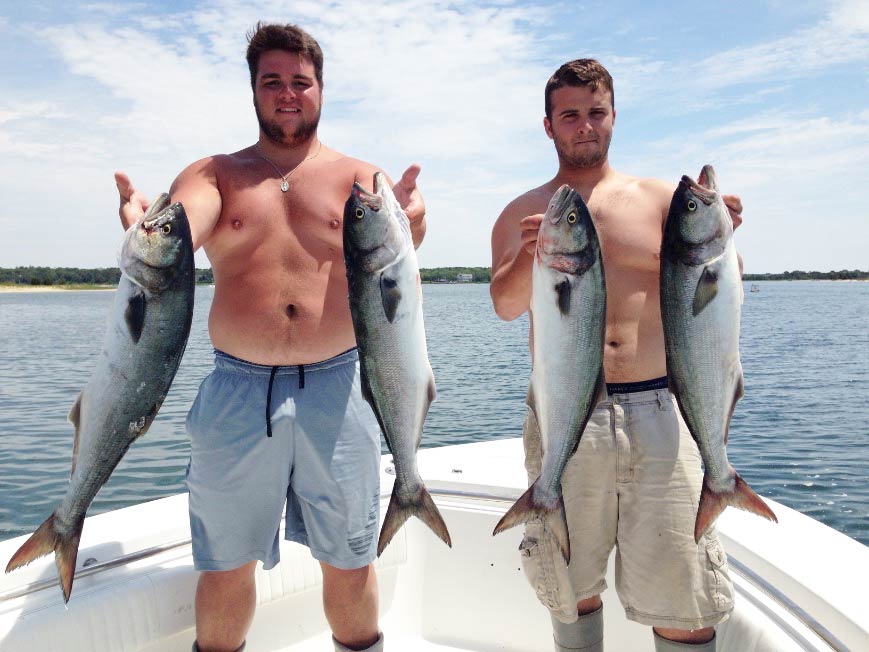
As we mentioned earlier, fly fishing in Cape Cod isn’t limited to just Striped Bass. Bluefish are another popular game fish that keep anglers busy. These creatures are known for their aggressive strikes and powerful fights that can seriously test your fly fishing skills.
Similar to Stripers, you need to know where to find the right spot. Bluefish are seasonal visitors, arriving sometime around mid-June and staying until mid-October. During the summer, smaller Bluefish patrol the local estuaries, bays, rivers, and saltwater ponds. Anglers often look for their Bluefish blitz in offshore waters, although you can pursue them in Cape Cod Bay and the Atlantic Ocean from Princetown down to Nantucket, and from Monomoy Island to Martha’s Vineyard in the west.
When tempting Blues on the fly rod, any pattern with lots of shine and color will work well. Normally, you’ll need to choose patterns that imitate their favorite bait fish, such as surf candies, deceivers, and clouser minnows. A 9 or 10 wt rod with a floating line and a heavy sinker is recommended.
Bonito
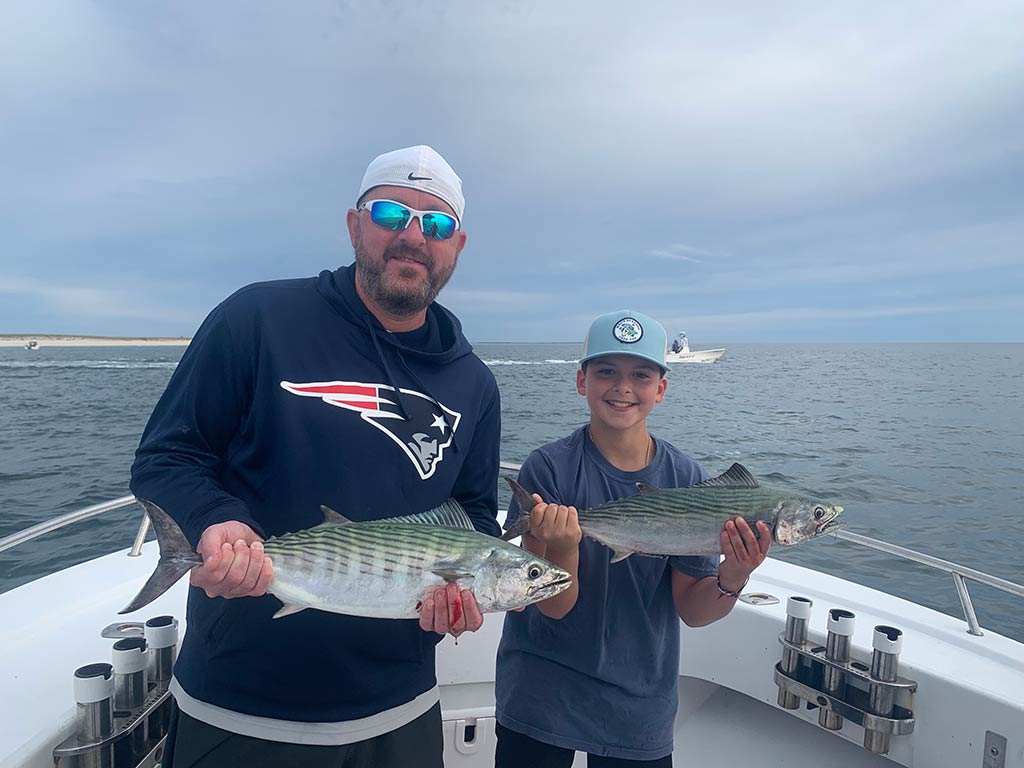
Fly fishing for Cape Cod Bonito isn’t an experience to be missed. Some locals say that you can truly claim your bragging rights if you capture one of these oceanic predators with a fly rod from a beach or jetty.
Bonito usually begin to crowd the local waters sometime around mid-to-late summer and stay until mid-October. Whenever these hydrodynamic speedsters bite inshore, the majority of fly fishermen and light tackle anglers drop everything and head out to fish. A 9 wt rod is a good choice to cover a variety of conditions. Anglers pack a sturdy reel with a smooth drag if they’re after a bigger Bonito.
Bonito Alley on the west side of Woods Hole is a good place to start, although finding Bonito is another challenge. They generally prefer waters that are at least 8 feet deep, although they also make rushes into shallow water and inlets.
False Albacore
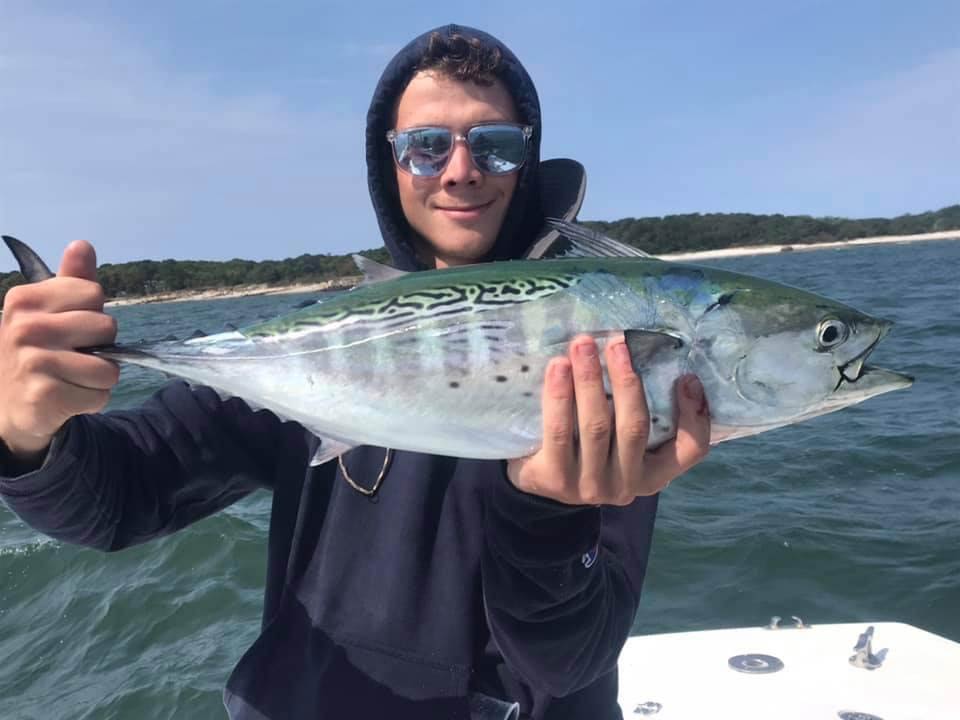
If there’s one other species to blame for the late summer fishing fever, it’s False Albacore. These gorgeous fish keep fly anglers busy well into September. But they’ll also make you travel far and wide to find ’em.
You can start your Alby adventure by checking out the tide around Noboska and then move to Falmouth Outer Harbor. As well as that, you can take a peek at the alley between the Vineyard and Norman’s, or explore the bite around Monomoy Island. If you’re planning a late season trip, consider heading to Cape Pogue.
A lot of locals call Albies the hardest-fighting inshore fish in Cape Cod. A fast-sinking line is a good choice for fly fishing, along with proper flies such as Surf Candy and Albie Wh*re.
Where can I go fly fishing in Cape Cod?
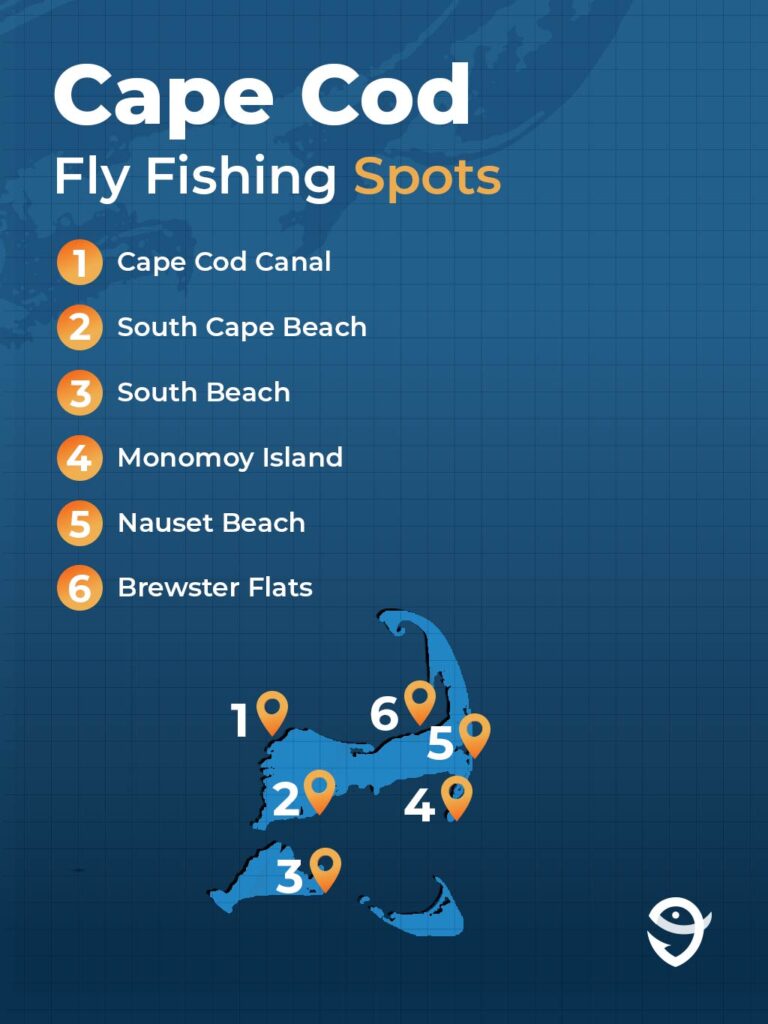
When planning your next adventure, ask yourself what’s your prime target. There are many great fly fishing spots in Cape Cod, each with its own unique characteristics and fish species. You can bounce from one spot to another, checking the western end of West Dennis Beach, moving to the entrance to East Bay through the jetty near Doses Beach, or stay in Monomoy Island for the whole day.
Here’s a quick list of spots you might want to consider:
- Monomoy Island: Located off the coast of Chatham, Monomoy Island is one of the most popular spots for fly anglers looking to catch Striped Bass, Bluefish, and many other species.
- Cape Cod Canal: This area is especially known for its excellent Tautog fishing. If Stripers or Bluefish aren’t your main priority, check out what the canal has to offer.
- South Beach: This is a prime Striper and Bluefish spot located in Edgartown, known for its harsh winds. A lot of South Beach anglers usually fish 2–3 hours before full tide.
- Nauset Beach: Nauset Beach in Orleans is a great spot for fly fishing for Striped Bass, Bluefish, and other species.
- Brewster Flats: Located off the coast of Brewster, the Brewster Flats are a vast expanse of sandbars and tidal pools. The main focus here is almost always on Striped Bass.
- South Cape Beach State Park: This park in Mashpee offers a variety of fly fishing opportunities for Striped Bass and Bluefish.
- Popponesset Bay: This bay is located in Mashpee, luring Striped Bass and Bluefish lovers whenever the season allows.
Pro tip: It’s never a bad idea to head out with a local guide. There are various professional captains that specialize in fly fishing, each with their own set of preferred honey holes. If you book a Cape Cod fly fishing charter, you can explore various inlets and estuaries, jetties, beaches, and flats that you wouldn’t know about otherwise!
How to go fly fishing in Cape Cod?
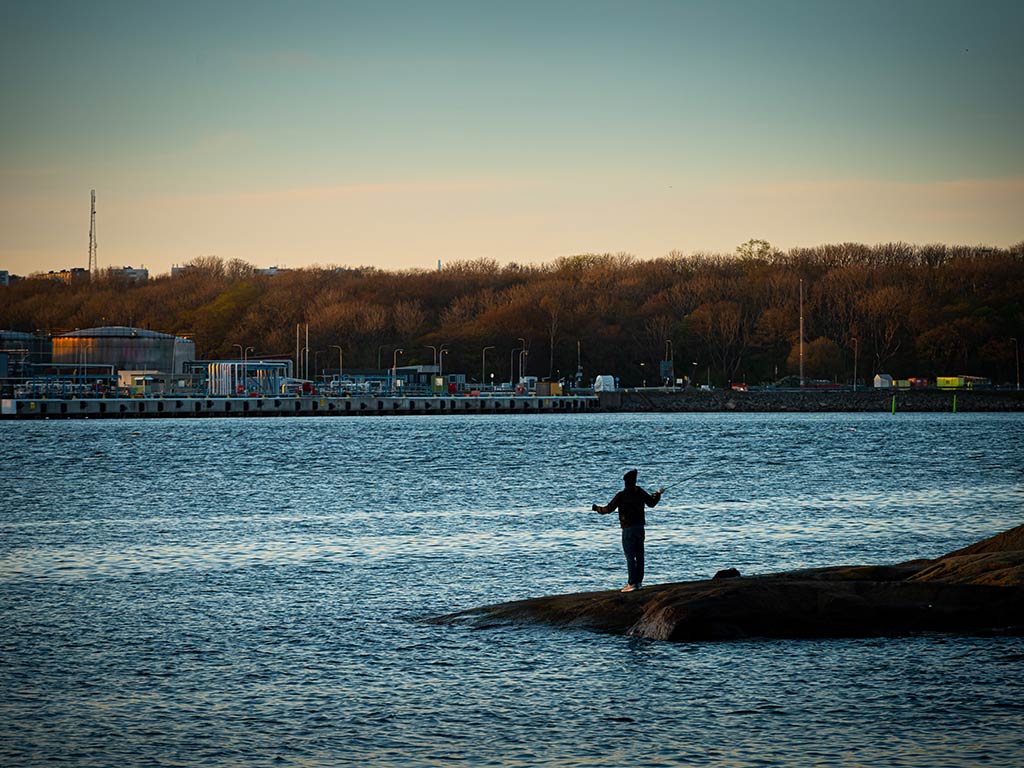
It goes without saying that fly fishing in Cape Cod requires a set of skills and techniques to ensure a productive day on the water. The shallow waters, strong currents, and winds can make the experience even more challenging, especially if you’re not familiar with the area. So, what gear should you prepare when heading out in Cape Cod?
Cape Cod Fly Fishing Gear
A two-rod approach can be useful if you feel that the fish are spooky. Consider packing an 8 wt rod with a clear intermediate line for stealth and a 9 or 10 wt rod with a sinking line. You’ll want a rod with enough backbone to handle the wind and to cast large flies, but still sensitive enough to feel the strikes.
Look for a quality fly reel with a strong drag system and a capacity of at least 200 yards of 30 lb test backing. A weight-forward floating line is a must for Striped Bass. Meanwhile, an intermediate line is overall the best choice for deeper waters.
If you’re new to Cape Cod’s waters, a 9′ leader with a 20 lb tippet is a good starting point. You can adjust the length and strength to the conditions, along with the flies whenever necessary. Your choice of flies depends on what species you’re after. In general, you’ll want to carry a variety of sizes and colors to match the conditions and the different fishes’ preferences.
Note that fly line management is crucial, especially when you’re working the flats. Ask any local, and they’ll tell you that excess slack can quickly turn into a problem. It’s important to keep your line free from any potential obstacles.
Cape Cod Fly Fishing FAQs
Fly Fishing in Cape Cod: Every Catch Is a Trophy
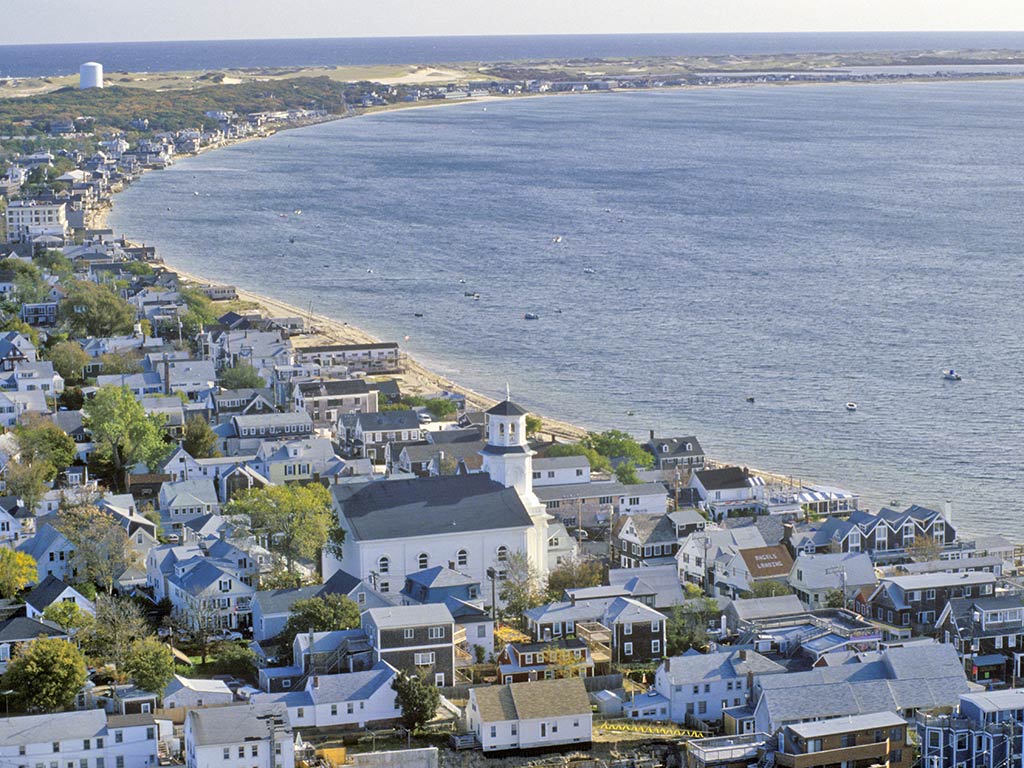
From beaches to rivers, and out to the open ocean, Cape Cod is a fly fisherman’s dream. There’s no better way to discover the local beauty than by fly fishing. The area has the perfect recipe to make everyone fall in love with its waters and everything it has to offer. You really need to try it at least once in your life. Be careful, though: fly fishing in Cape Cod is highly contagious!
Have you ever been fly fishing in Cape Cod? Was it Striped Bass or False Albacore that made you fall in love with the local waters? Share your questions and fish stories in the comments below!
The post Cape Cod Fly Fishing: The Complete Guide appeared first on FishingBooker Blog.
https://ift.tt/s1GBay7
0 Comments
Enregistrer un commentaire